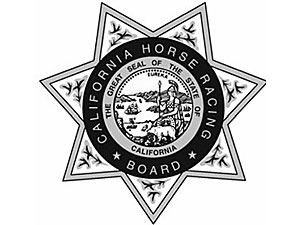CHRB Sudden Death Report Revealed

A detailed report to the California Horse Racing Board at its Nov. 21 meeting concluded that the cluster of sudden deaths from Bob Baffert's Betfair Hollywood Park barn did not have any similarities to each other and had no single, identifiable cause.
"All of these horses had pathological changes to one degree or another that, frankly, you couldn't do intentionally if you wanted to," said Dr. Rick Arthur, the equine medical director for the CHRB. "I don't even know if you could do it unintentionally."
Arthur did note the cluster was statistically "extremely abnormal."
"We couldn't find anything," he said. "It doesn't change the fact we don't have an answer. It does say there is something wrong here."
Arthur and Dr. Francisco Uzal of the California Animal Health & Food Safety Laboratory System, which conducts necropsies on racehorses that die on a California racetrack, presented the report to the CHRB during its regular monthly meeting, held at Hollywood Park. The 26-page report outlined the findings on seven cases, all of which occurred out of Baffert's Hollywood barn between late 2011 and early 2013.
"There is no factually based explanation as to why these sudden deaths clustered in Baffert's barn at Hollywood Park, and not at any other tracks where Baffert stables, races, and trains horses with similar training and veterinary practices," said Arthur in quoting from the report.
The report examined necropsies, toxicology, exercise history, and medication and veterinary services on the seven horses. It also investigated the barn in which the horses were housed, the soil, and the air quality on the racetrack.
Five of the seven deaths resulted from cardio-pulmonary failure, noted Uzal. One horse had evidence of equine protozoal myelitis (EPM), and one had a rodenticide in its system. Of the five with cardio-pulmonary failure, only two showed changes in the heart.
Arthur said that shortly after the third case occurred, the CHRB began conducting out-of-competition testing on many horses in Baffert's Hollywood and Santa Anita Park barns, looking for blood-doping agents.
"We found no evidence of that," Arthur said.
When the investigation examined Baffert's training practices, it didn't find anything unusual in the way those seven horses were trained. Two were 2-year-olds that were only working. One was a recent claim. The others "all had exercise histories that were more typical of Baffert's barn," said Arthur.
The report detailed the medications routinely dispensed by Baffert's veterinarians. The two that Arthur mentioned to the board were Ventipulmin (clenbuterol) and Thyro-L (levothyroxine), both of which Baffert used legally.
"Clenbuterol has been recognized to cause cardiac changes for a long period of time," said Arthur. "It has never been associated definitively with sudden death."
The report said that Baffert used Thyro-L, a thyroid hormone, on all of the horses he trained during that time.
"It is fairly commonly used at the racetrack," the report said. "However, the blanket prescribing of thyroxine to all horses in Baffert's barn does appear unusual. In a sense, the medication was treated more as a supplement than a medication. Thyroxine is most commonly used by veterinarians to assist weight loss in overweight horses, especially when they come in from the farm."
Because all of Baffert's horses received the medication, its use "does not explain why all the fatalities occurred at Hollywood Park," said the report. Arthur noted that Baffert conducted an internal review of his supplement program and discontinued the use of thyroxine in April.
Arthur told the board that Baffert and his entire staff were extremely cooperative throughout the investigation.
"There is no evidence whatsoever CHRB rules or regulations have been violated or any illicit activity played a part in the seven sudden deaths," the report concluded.
